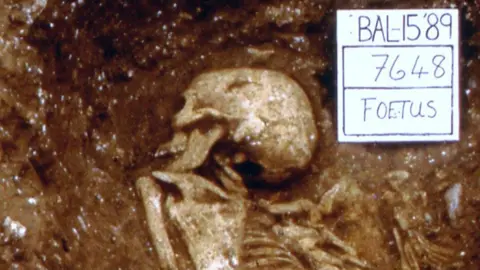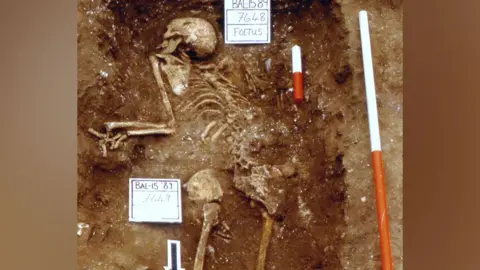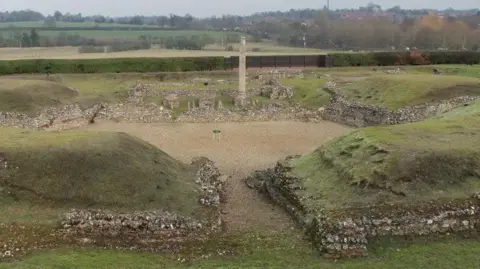First known triplets are among museums' treasures
 North Herts Council
North Herts CouncilThe world's first recorded case of triplets and a Roman-era king are among the remains of more than 1,500 people held by Hertfordshire museums.
The triplets and their mother, who died in childbirth, were featured in a BBC documentary in 2011. They are held at North Hertfordshire Museum, in Hitchin.
Curator Keith Fitzpatrick-Matthews said remains held by the museum were used to study the history of disease, while DNA helped experts learn about human migration.
The skeletons and cremated burials were discovered during archaeological excavations.
 North Herts Council
North Herts CouncilMr Fitzpatrick-Matthews said: "The vast majority of our collection comes from Baldock, which has the largest number of cemeteries known [in] any Late Iron Age and Roman town in Britain."
The town was where the bones of the woman and her children were found in 1989. Analysis revealed the mother was about 40, and they died in about AD70, according to the Local Democracy Reporting Service.
She had been pregnant with triplets. One had been born, one had been a breach birth and the third was unborn.
The museum also holds remains found during excavations at a cemetery in Pirton, which was used during the Seventh to Ninth Centuries – a period that is otherwise "poorly represented" in its collection of about a million items, added Mr Fitzpatrick-Matthews.
 Paul Farmer/Geograph
Paul Farmer/GeographSt Albans Museum holds the remains of the possible king, who was unearthed at the city's Folly Lane.
He was "probably one of the local kings of the Catuvellauni tribe, conceivably the king known as Adminius, who was on friendly terms with the Romans", said curator David Thorold.
"Whoever it was, he was cremated in a funeral pyre alongside cavalry equipment, armour, a chariot, exotic ivory-decorated furniture and silver goods."
Much of the museum's collection dates to the Roman era (AD43 to about AD410), with some dating to the Iron Age (about 750BC to AD43).
Mr Thorold said the collection was used to help curators "discover how burial customs have changed over time".
Follow Beds, Herts and Bucks news on BBC Sounds, Facebook, Instagram and X.
